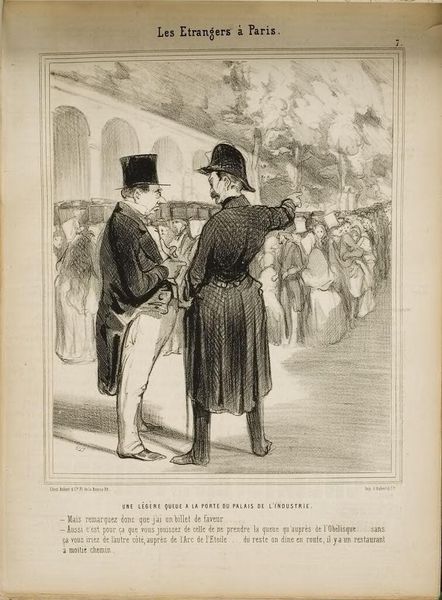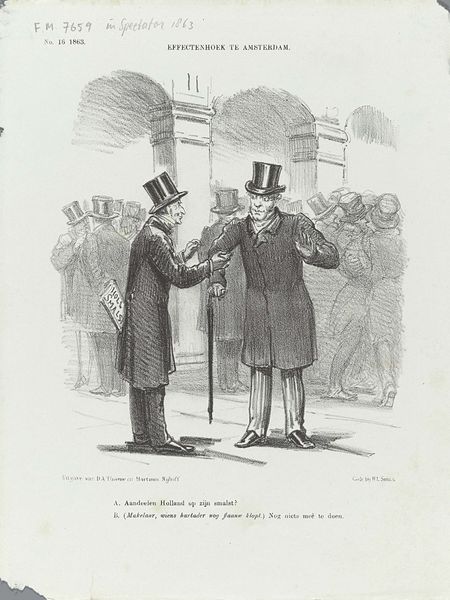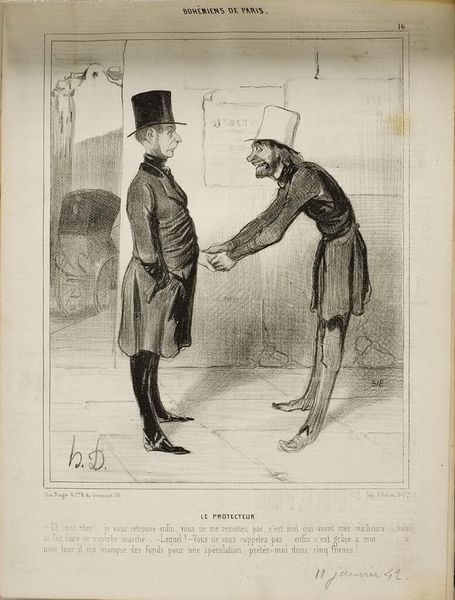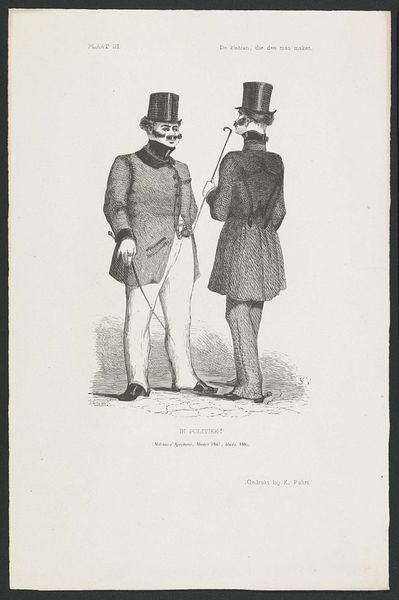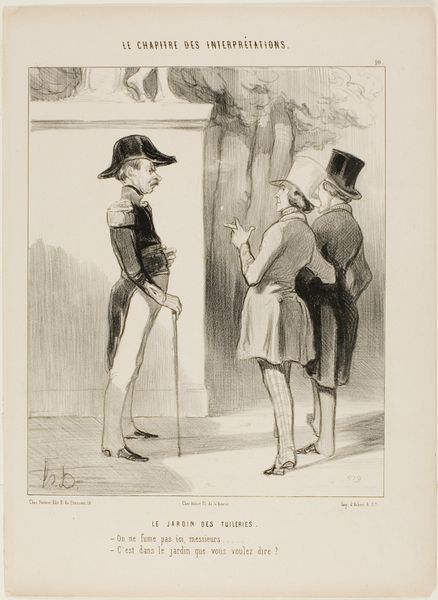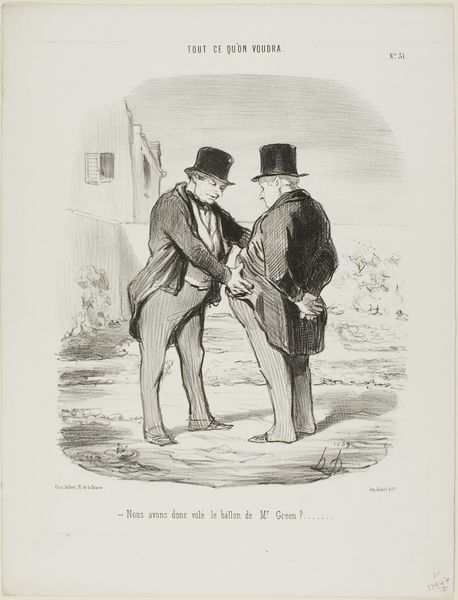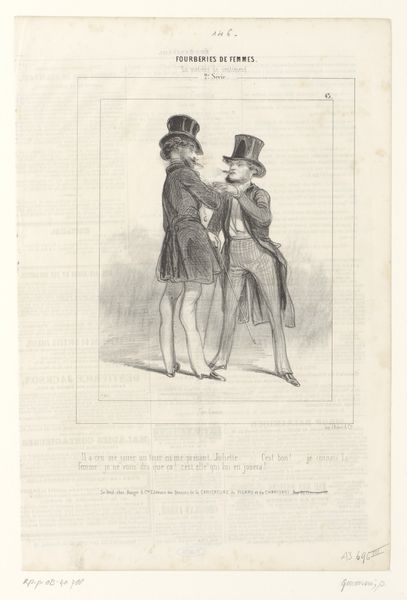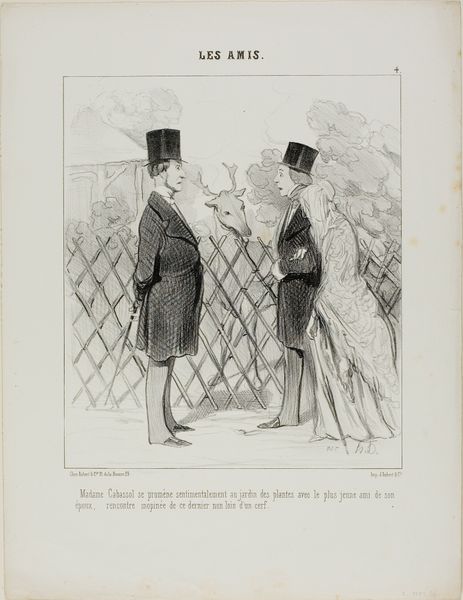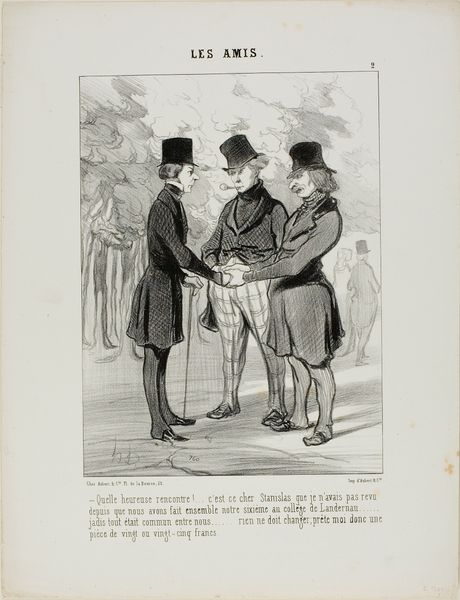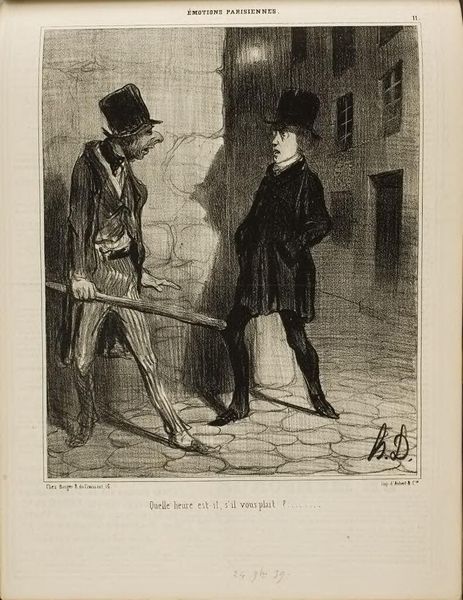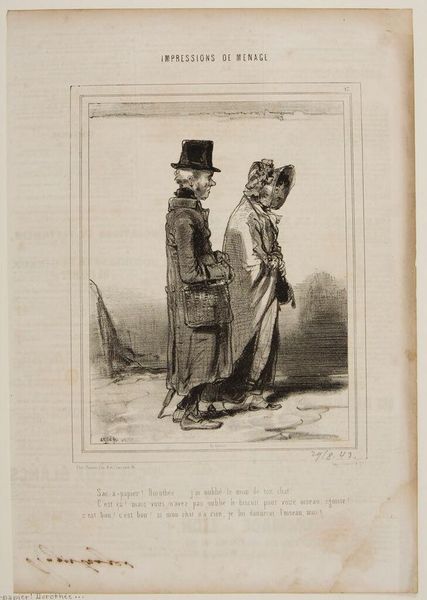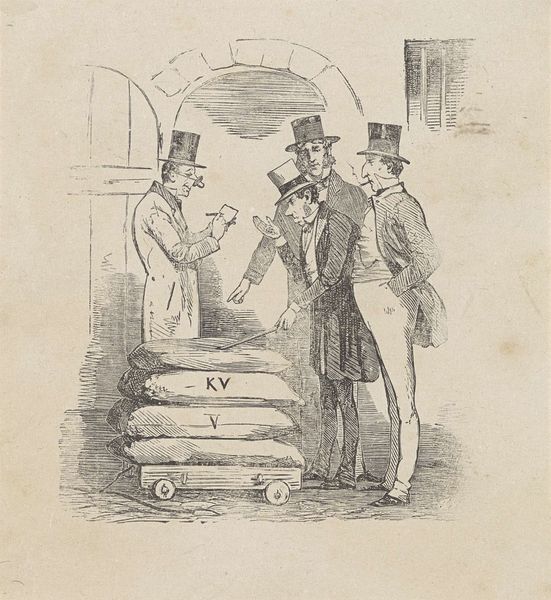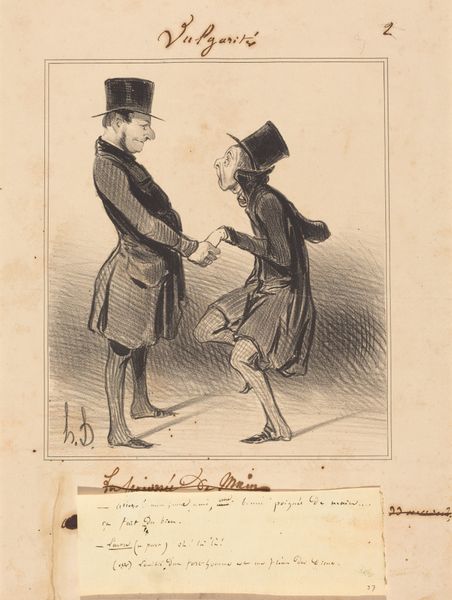
A Small Queue at the Entrance to the Palace of Industry. “- But I am telling you that I have a special entry permit! - Quite so, and this is why you are allowed to queue up already at the Obelisk.... otherwise you would have to start on the other side, close to the Etoile.... incidentally why not have a bite to eat while you are waiting... there is a charming little restaurant half way, plate 7 from Les Etrangers à Paris 1844
0:00
0:00
drawing, lithograph, print, paper
#
drawing
#
lithograph
# print
#
caricature
#
paper
#
romanticism
#
cityscape
#
genre-painting
#
history-painting
Dimensions: 240 × 201 mm (image); 340 × 267 mm (sheet)
Copyright: Public Domain
Curator: This print, created by Honoré Daumier in 1844, is titled "A Small Queue at the Entrance to the Palace of Industry". It’s a lithograph on paper, held in the collection of The Art Institute of Chicago. The print captures a scene of Parisian life. What’s your first reaction to it? Editor: Immediately, I notice the emphasis on layers – the layers of clothing on these figures, but also the implied social strata evident in their posture and attire. The materiality seems intentionally drab; the lithography creates a somber and monotonous reality of this “light queue.” Curator: Absolutely. Daumier was known for his social commentary, and here, the subject of waiting in line, even with a "special permit," becomes a pointed critique of class distinctions. Consider the absurdity of the long queue and the sardonic humor in the caption. This work belongs to a series entitled, "Les Etrangers à Paris," hinting at alienation and exclusion. Editor: That element of labor—the queue itself as a kind of social work—is very interesting. The “privilege” of queuing is a form of structured waiting, one with a logic born from materials such as time and institutionalized hierarchies. It poses a stark counterpoint to the presumed promise of industrialization and progress. The promise of advancement through labour here only seems to get you in a better queue. Curator: Precisely. It really lays bare the unfulfilled promises of progress during this period. Note how Daumier exaggerates the physical appearance of the characters, contributing to the overall caricature. His use of shadow and light adds dramatic depth to the composition, underscoring the socio-political context and the individual experience of navigating bureaucracy. It invites questions about power structures and everyday life. Editor: This lithograph seems to be a work about controlled circulation in many forms, but particularly about the social body itself. Daumier illustrates the very real friction and absurdity of social systems and how these intersect with production, governance and waiting. Curator: Reflecting on it, I am reminded of the enduring relevance of Daumier’s commentary. Editor: I'm left contemplating how we continue to measure progress through the experience of queuing in its digital or social form.
Comments
No comments
Be the first to comment and join the conversation on the ultimate creative platform.
